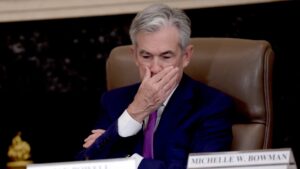Welcome to Extreme Investor Network, where we provide you with valuable insights and analysis on the latest financial trends and developments. Today, we’re diving into the hot topic of inflation and specifically focusing on the supercore inflation reading.
As the US Federal Reserve gears up for potential rate hikes, the recent consumer price index reading has sent shockwaves through the market. But what exactly is supercore inflation and why is it causing such a stir?
Supercore inflation goes beyond the traditional core CPI measure by excluding volatile food and energy prices, as well as shelter and rent costs from its services reading. This more refined metric provides a clearer picture of underlying price trends, which is essential for understanding the true state of the economy.
According to recent data, supercore inflation accelerated to a 4.8% pace year-over-year in March, marking the highest level in 11 months. Tom Fitzpatrick, managing director of global market insights at R.J. O’Brien & Associates, points out that if we annualize the recent readings, the supercore inflation rate exceeds 8%, a far cry from the Federal Reserve’s 2% target.
The ongoing problem lies in the fact that while overall CPI increased by 3.5% year-over-year last month, the core issue remains in services prices. Without a key cooling in services prices, achieving a sustained 2% inflation rate becomes increasingly challenging.
Moreover, the current macroeconomic backdrop presents unique challenges for the Fed. With demand-driven inflation and robust stimulus payments fueling record inflation levels in 2021 and 2022, the central bank now faces a complex situation where essential household expenses like car and housing insurance are driving inflation to unprecedented heights.
As the Fed grapples with sticky inflation rates and a dwindling consumer savings rate, the prospect of more rate hikes becomes a daunting task. Bringing down inflation with traditional monetary policy tools may prove difficult, as the underlying drivers of inflation are less responsive to tightening measures.
While the Fed is unlikely to hike interest rates further in the near term, the possibility remains on the table as long as inflation remains elevated above their 2% target. The question now becomes whether we are witnessing a temporary spike or a more entrenched inflationary trend that could prompt future rate hikes.
Stay tuned to Extreme Investor Network for more exclusive insights and analysis on the ever-evolving financial landscape. Be sure to bookmark our page for the latest updates on inflation, market trends, and investment strategies that will help you stay ahead of the curve.


